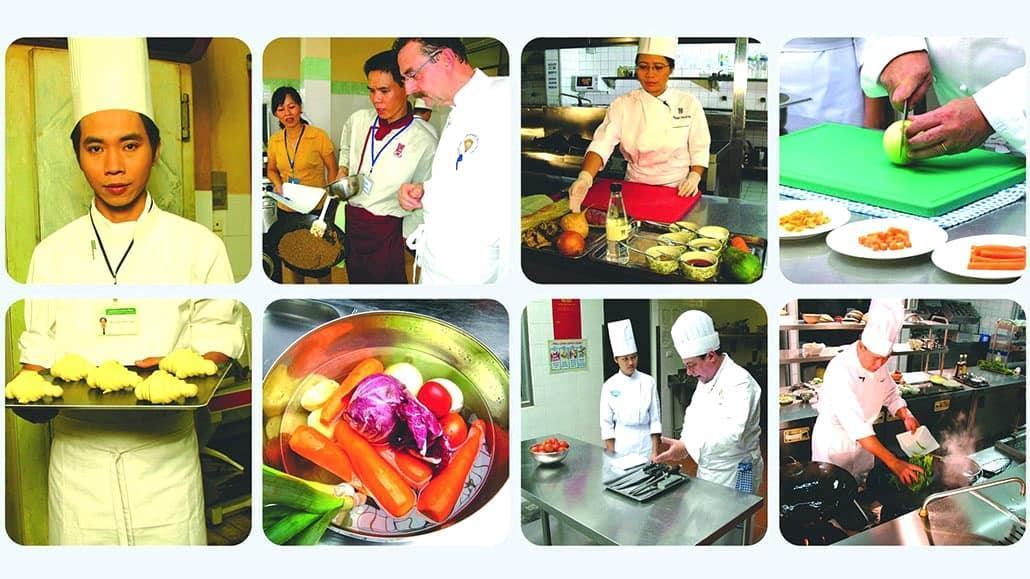The Vietnam Tourism Occupational Standards VTOS Food Preparation cover all cookery jobs from Food Preparation Worker (Level 1) to Head Chef (Level 4). The VTOS food preparation standards have also taken account of local restaurant and hotel operations.
Food preparation includes the preparation, cooking and finishing of hot and cold dishes and covers specialist areas such as baking and patisserie, desserts and other dishes.

Food preparation workers perform many routine tasks under the guidance of cooks, chefs or food supervisors. They prepare cold foods, slice meat, peel and cut vegetables and do many other tasks. Food preparation workers often perform routine, repetitive tasks under the direction of cooks or food supervisors. To help cooks and other kitchen staff, they prepare ingredients for complex dishes by slicing and dicing vegetables and by making salads and cold items.
Assistant or line cooks, work at assigned stations equipped with the necessary types of stoves, grills, pans, and ingredients. The responsibilities of cooks vary depending on where they work, the size of the facility, and the complexity and level of service offered. Restaurant cooks usually prepare a wide selection of dishes and cook most orders individually.
Restaurant cooks may order supplies, set menu prices, and plan the daily menu. Short-order cooks prepare foods in restaurants and coffee shops that emphasize fast service and quick food preparation.
Bakers and pastry cooks mix and bake ingredients according to recipes to make a variety of breads, pastries, and other baked goods.
Sous chefs are a kitchen’s second-in-command. They supervise the restaurant’s cooks, do some meal preparation tasks, and report results to the head chefs. In the absence of the head chef, sous chefs run the kitchen.
Chefs and head cooks oversee the daily food preparation at restaurants or other places where food is served. They direct kitchen staff and handle any food-related concerns. Cooks prepare, season, and cook a wide range of foods, such as soups, salads, entrees, and desserts.
Executive chefs, head cooks, and chefs de cuisine are primarily responsible for overseeing the operation of a kitchen. They coordinate the work of sous chefs and other cooks, who prepare most of the meals. Executive chefs also have many duties beyond the kitchen. They design the menu, review food and beverage purchases, and often train employees. Some executive chefs are primarily occupied by administrative tasks and spend little time in the kitchen.
FOOD PREPARATION QUALIFICATIONS
| Cert No | Occupational Qualifications (aimed at industry) | Level |
| CFPL1 | Certificate in Food Preparation (Larder/Cold Preparation) | 1 |
| CFPC1 | Certificate in Food Preparation (Cooking/Finishing) | 1 |
| CPB1 | Certificate in Pastry and Baking | 1 |
| CFP2 | Certificate in Food Preparation | 2 |
| CPB2 | Certificate in Pastry and Baking | 2 |
| CFPS3 | Certificate in Food Preparation Supervision | 3 |
| DFPM4 | Diploma in Food Preparation Management | 4 |



